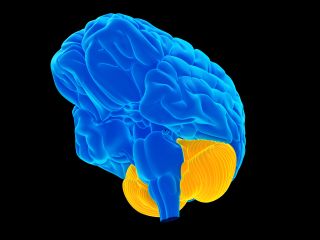Unlock Peak Performance: How Cardio Fortifies Cerebellar Power
Discover how high-intensity cardio fortifies cerebellar function, enhancing coordination, cognitive agility, and achieving flow states for a more productive life.

Elevate Your Brain: How Cardio Fortifies Cerebellar Power for Peak Performance
Ever wondered what gives athletes their superhuman grace or allows a musician to play complex pieces flawlessly? The secret often lies in the cerebellum, a powerful yet often overlooked part of your brain. Vigorous cardio fortifies cerebellar function, acting as a catalyst for enhanced coordination, sharper thinking, and the elusive state of 'flow.' This isn't just about physical prowess; it's about optimizing your brain for everyday life, from smooth movements to creative problem-solving.
What is the Cerebellum and Why Does It Matter?
Nestled at the back of your brain, beneath the cerebrum, the cerebellum—Latin for "little brain"—is a crucial coordinator of movement, balance, and timing. It meticulously fine-tunes muscle contractions, allowing for the fluid, precise actions we often take for granted. Beyond physical control, cutting-edge neuroscience suggests the cerebellum plays a significant role in coordinating our thoughts, emotions, and even language processing (Harvard, 2024). When this "little brain" operates optimally, it paves the way for peak performance and mental clarity.
Can Exercise Really Improve Brain Function?
For decades, the profound connection between physical activity and brain health has been a topic of fascination for researchers and performance enthusiasts alike. Early insights, such as those from my father, a brain researcher and keen observer of athletic fluidity, hinted at how intense training might sculpt the brain. Today, empirical evidence strongly supports the idea that cardio fortifies cerebellar structure and function, leading to measurable improvements in both physical and cognitive domains. This isn't just anecdotal; it's a testament to the brain's remarkable neuroplasticity.
Understanding Cerebellar Ataxia: The Cost of Discoordination
To truly appreciate the cerebellum's power, consider what happens when it falters. Conditions like cerebellar ataxia, stemming from genetic factors, trauma, or neurological diseases, result in a profound loss of coordination and balance. Simple actions—walking, reaching for a cup, or even speaking—become clumsy and disordered. Historically, treatment focused on adaptation, but emerging research points to a more proactive approach: strengthening the cerebellum itself. By understanding the challenges of ataxia, we gain deeper insight into the cerebellum's critical role in maintaining our physical and mental "order."
How High-Intensity Cardio Impacts Cerebellar Health and Ataxia Symptoms
Groundbreaking research is now demonstrating how targeted exercise can directly benefit cerebellar health. A recent randomized clinical trial published in JAMA Neurology (Barbuto et al., 2025) provides compelling evidence. This study investigated whether high-intensity cardio could improve motor function in individuals with cerebellar ataxia. Participants engaged in 30-minute cardio sessions, five times a week, at up to 85% of their predicted maximum heart rate on stationary bikes at home. The results were significant:
"Improvements in ataxia symptoms, fitness, fatigue, balance, and gait were maintained for individuals in the aerobic group who continued to hit training goals at one year, but trended back to baseline for those who did not."
Initial MRI scans from the study also revealed a subtle but meaningful increase in the cerebellum's gray matter volume within the aerobic exercise group. This suggests that cardio fortifies cerebellar size as well as its functional capacity. Furthermore, high-intensity interval training (HIIT) is known to boost brain-derived neurotrophic factor (BDNF), often called "Miracle-Gro" for the brain, which promotes neuron growth and strength. These findings underscore the vital role of moderate-to-vigorous physical activity (MVPA) in stimulating neuroplasticity and neurogenesis across various neurological conditions.
Beyond Ataxia: The Universal Benefits of a Stronger Cerebellum
Even if you don't experience ataxia, a robust cerebellum offers profound advantages for everyone. Imagine a spectrum: on one end, uncoordinated movement; on the other, frictionless, integrated performance. A finely tuned cerebellum moves us closer to that fluidity in all aspects of life. Stanford researchers emphasize that cerebellar strength extends far beyond physical agility, impacting a wide range of daily functions:
- Enhanced Balance and Movement: Experience smoother gait, quicker reflexes, and sharper hand-eye coordination. This benefits everything from carrying groceries to excelling in complex sports like tennis (think of Björn Borg's legendary fluidity, cultivated through rigorous training). A strong cerebellum also aids in the precise fingerwork of a concert pianist or the steady hand of a surgeon.
- Cognitive and Creative Gains: A well-exercised cerebellum supports superior cognitive flexibility, problem-solving abilities, and superfluid thinking. This allows seemingly disparate ideas to connect effortlessly, fostering deeper insights and creative breakthroughs crucial for innovation in any field.
- Improved Emotion Regulation: Research indicates the cerebellum influences mood and stress response by coordinating brain signals. A healthier cerebellum can contribute to better emotional balance and resilience, helping you navigate daily pressures with greater calm.
Practical Steps to Boost Your Cerebellar Fitness
Integrating high-intensity aerobic training into your routine doesn't have to be daunting. Consistency is key, and gradual progression minimizes injury risk while maximizing benefits for your brain. Here’s how to start:
- Choose Your Activity: Opt for activities that elevate your heart rate significantly, such as fast walking, jogging, cycling (stationary or outdoor), swimming, or using an elliptical. Even if balance is a concern, seated cycling or treadmill support bars offer safe options.
- Warm-Up and Cool-Down: Always begin with an easy 5-10 minute warm-up to prepare your body, and finish with a 5-10 minute cool-down to aid recovery.
- Intensity Matters: Aim for moderate-to-vigorous intensity, where you can speak in short sentences but not comfortably sing. Gradually work towards 30-minute sessions, 3-5 times per week, at 70-85% of your predicted maximum heart rate.
- Listen to Your Body: Start at a comfortable pace and increase intensity and duration gradually. Pushing too hard too soon can lead to injury or exercise aversion. Steady, repeated practice provides the cerebellum with the reinforcement it needs to adapt and strengthen.
- Stay Consistent: The "peak-end rule" suggests we remember the most extraordinary moments and feelings near the end of an experience. Focus on the positive feelings of accomplishment and energy after your workout to build a habit.
The Takeaway: Unleash Your Brain's Full Potential
High-intensity aerobic training is more than just a workout; it's an investment in your brain's future. By understanding how cardio fortifies cerebellar function, we unlock a powerful pathway to enhanced physical coordination, sharper cognitive abilities, and easier access to flow states. Embrace the power of movement to transform not just your body, but your mind, enabling you to move, think, and create with unparalleled fluidity every single day.
*Disclaimer: This content is for informational purposes only and does not constitute medical advice. Always consult a healthcare provider before starting any new exercise program, especially if you have pre-existing conditions or haven't engaged in high-intensity exercise recently.*
References
Barbuto, S., Lee, S., Stein, J., Kuo, S. H., Quinn, L., Spinner, M., & Stern, Y. (2025). Home Training for Cerebellar Ataxias: A Randomized Clinical Trial. JAMA Neurology (First published online: September 14, 2025). doi:10.1001/jamaneurol.2025.3421
About Ava Thompson
NASM-certified trainer and nutrition nerd who translates science into simple routines.
View all articles by Ava Thompson →Our content meets rigorous standards for accuracy, evidence-based research, and ethical guidelines. Learn more about our editorial process .
Get Weekly Insights
Join 10,000+ readers receiving actionable tips every Sunday.



